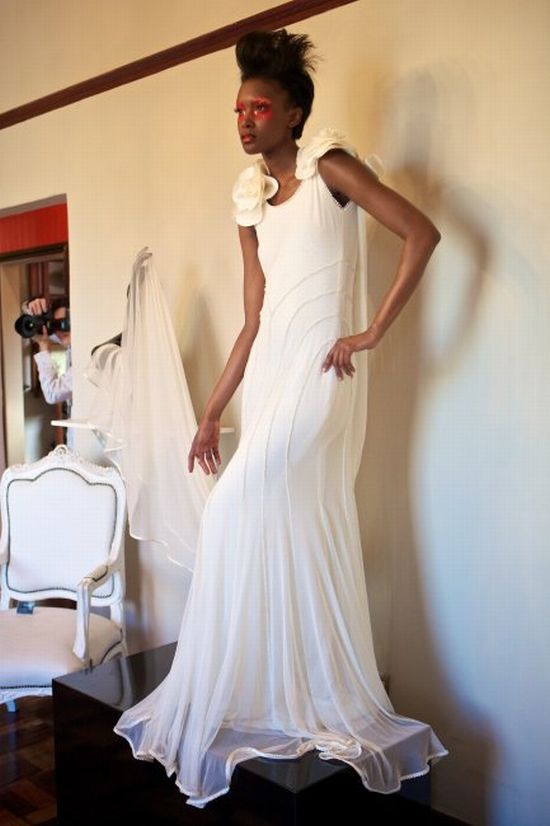 I am concerned about the state of African fashion as it is now. Here’s why. While thanks, primarily to African fashion bloggers in the last five years, African designers are finally getting the recognition they deserve in African and Western media, what appears to be lacking, however, are diverse and distinct point of views on fashion from Africa.
I am concerned about the state of African fashion as it is now. Here’s why. While thanks, primarily to African fashion bloggers in the last five years, African designers are finally getting the recognition they deserve in African and Western media, what appears to be lacking, however, are diverse and distinct point of views on fashion from Africa.
These days, the homogeneity in Africa’s fashion industry, especially those marketed to Western consumers, are at best, non-compelling.
What is African fashion? Is it the “African” that makes fashion “African fashion?” Is African fashion just fashion from designers of African heritage, regardless where they reside? Is African fashion the fabrics that are used to design garments?
Who is an African designer? Is it the “designer” of African heritage who slaps print fabrics together that are commonly seen in Africa? What if an American or European of African heritage has never been to Africa, but designs with “African” fabrics, is that American/European born African an African designer? What about a White/Black American or European designer who uses “African” fabrics to create clothing, shouldn’t they technically be an “African designer?” by the current broad definitions?
There is a need to re-define what is or isn’t “African fashion” and who isn’t and who is an “African designer. “ It appears, for a while now, Africa’s fashion industry has confined the definition of African fashion to “African” prints namely Ankara and mud cloths, among a few more prominent print fabrics commonly available on the continent. These definitions have become quite limiting; and ultimately affect the bottom line (money/profit margins), particularly in the many instances or seasons, where there is a resurgence and global circulation of “African” fashion.
For example, in the last few years alone, Western designers such as Boxing Kitten, SUNO, EDUN, Diane Von Furstenberg, Burberry, Vivienne Westwood, Bottega Veneta, Gwen Stefani, Louis Vuitton and Thakoon have embraced African prints from ankara to mudcloths to shukas aka masai plaids; and made it the musthahave.
With this phenomenon, which repeats itself periodically, among other factors, African fashion designers can no longer be content with just saying they are African designers because they design with “African” fabrics. There must be an active push by consumers of fashion from Africa and Africa’s industry professionals for African designers to be innovative, educate themselves and elevate their crafts so they can compete and be taken seriously on the global fashion map.
Below are the reasons why:
1. The Global Circulation of “African” Fashion Is Driven by Western Designers: While African designers continue to gain strides on the global map, albeit small strides, as it currently stands, the global circulation of “African” fashion as we know it, is driven by Western designers. When an African designer creates designs out of the stereotypical “mudcloth” or “Ankara” fabrics, and calls it “African fashion,” the global retail stores, Western media and buyers ignore it; until a Western fashion designer does the same and calls it African “Inspired.” Shortly after, we see the likes of high-end boutiques, department stores / local retail stores stocking these African Inspired designs. What this translates to is that thousands and millions of units of “African” fashion merchandize are moved and circulated all over the world, but by the Western designer who is inspired by Africa in that season. Bottom line, money flows out of the pockets of African designers doing the same thing their Western counterparts with no return on investments.
This is usually where I hear Africans and African designers scream about the exploitation by the West of Africa etc. As harsh as this may sound, “deal with it.” First, as we now know or should know, the fabrics that Africans have made uniquely theirs originate from Holland, France and Indonesia. To date, the Holland Dutch Wax is one of the highly coveted fabrics imported into Africa. So, what is the anger over so called “African fabrics” and the West stealing Africa’s identity and culture? Like Western designers, the bar must be raised just as high for African designers. African designers should be expected to be just as innovative, obtain a fashion education and get out of their comfort zone with the use of stereotypical “African” fabrics coupled with mediocre designs, at best.
2. African Designers, Like Their Western Counterparts, Must Get An Education & Learn the Business of Fashion or Risk Being Irrelevant: It used to be when most thought about the African designer, an image of a seamstress or tailor, in some small African village sewing and mending dresses, came to mind. This image for a long time prevented even Africans from embracing its own designers. Over the past four years ; if there is one thing we have shown you at Ladybrille, it is that African fashion designers are actually, for the most part, quite educated . Fashion for the many we have featured, over the years, is a second career. Many African designers hail from backgrounds in medicine, law, engineering, education, management, finance and the list goes on.
But, this also is where the problem lies. While many were willing to invest in an education and attend the top schools for their first degrees, the same group seem unwilling to invest in a fashion education. This is no longer acceptable. Many African designers can afford to invest in themselves i.e. get a fashion education to understand both the business of fashion and how to stay innovative with trends and ideas. To not do so is to risk being irrelevant and not making a return on investment, especially as the West continues to debunk its myths about Africa and looks to investments in the continent’s apparel industry, with a focus on financial benefits to the West.
Western designers are expected to and many, for the most part, do obtain a formal fashion education. The bar should not be any less because the designers here are of African heritage. African designers in the diaspora have absolutely no excuse for not enrolling in a fashion school to get the education they need. The same holds for those in places like Ghana, Senegal, South Africa and Nigeria. For those without fashion schools, shows like Africa Fashion Week South Africa have shown that there are talented designers from almost every country in Africa. These designers should be the pioneers teaching fashion apprenticeship so the new breed of African designers can compete both within and outside Africa without an over-reliance and comfort zone on “African” fabrics.
3. African Designers Must Attend Market Weeks & Trade Shows, Expand Their Minds & Innovate Through Their Designs: Very often, African designers expect somehow that they will design their designs and the world will somehow know about them. A feature on Ladybrille or other similarly situated sites and blogs, while good, is not where it stops. Showing at a fashion show while also good, is also not where it stops. African designers should spend their time at market centers, marts, market weeks and trade shows to network, showcase to buyers and get their products out there.
For African designers in the diaspora, these platforms exist in cities like London, Los Angeles, Dallas, Miami, Chicago and Atlanta. For example, market centers have weeks, market week, where producers exhibit their designs for buyers to check out. This is the place to network with colleagues, draw inspiration from others and also court buyers. The same holds for tradeshows around the globe, a prominent one of which is MAGIC in Las Vegas. Internationally and within Africa, there are many trade shows/fashion exhibition including Design Indaba in South Africa to participate in. The benefits of a trade show can be tremendous. For example, earlier this year, apparel manufacturers from Cameroon, the Gambia and Ghana signed $570,000 in deals, with potential orders estimated at $4.5 million, through the West Africa Trade Hubv at MAGIC in Las Vegas.
4. African Fashion Bloggers & Media Must Begin Having a Carefully Curated List of African Designers to Force Innovation : These days, it seems anything goes in blogosphere in terms of African fashion. Many bloggers are just delighted there are more “designers” putting out Ankara African designs. African bloggers wield a lot of influence, even more so than their Western counterparts, in terms of their impact on the African fashion designer. It is still not unusual to see majority of Western media and Western blogs ignore African designers. African fashion and lifestyle bloggers still make up the bulk of citizen journalists pushing Africa’s cosmopolitan fashion stories. These bloggers, especially those with backgrounds in fashion, should no longer be content with posting a sea of posts/pictures that primarily show Ankara or mud cloth designs with no originality or creativity. They should begin demanding and asking for carefully thought out and well constructed garments, full of innovation that can weather the storm, whether a Western designer jumps on the “African” fabric print trend or not.
5. African Designers Must Begin Learning Africa’s Fashion History: I have honestly lost count of the many designers I have had the privilege of interviewing. I know consistently, however, when I ask about the inspirations of many designers, particularly African designers, I get the big Western designer names thrown at me. There is definitely nothing wrong with that, in my book. But, there is something wrong with many of these designers not knowing the great African designers that have paved the way, knocked down walls and left a legacy of amazing craftsmanship and talent for new crop of African designers to follow.
This history must be studied so that it can be emulated. You can’t know where you are headed or avoid the mistakes of the past if you do not know your history. Africa’s fashion history includes names of designers like Alphadi (Niger), Chouchou Lazare (Gabon), Colle Sow Ardo (Senegal), Oumou Sy (Senegal), Jemann (Cameroon), Xuly Bet (Mali/Senegal), Ozwald Boateng (Ghana), Duro Olowu (Nigeria), Joe Casely-Hayford (Ghana), Marianne Fassler (South Africa) , David Tlale (South Africa), among many.
It really is time to rethink definitions and who an “African” designer is, and what constitutes “African” fashion. Really, will the real African designers please stand up?!
-Uduak Oduok
-Photocredit: Simon Deiner/SDR Photo
-Photo description: David Tlale at Capetown Fashion Week 2011
Founded in 2007, Ladybrille® Magazine is a California based pioneer digital publication demystifying the image of Africans in the west through contemporary African fashion and celebrating the brilliant woman in business and leadership, with an emphasis on the African woman in the diaspora. Our coverage includes stories on capital, access to markets, expertise, hiring and retention, sales, marketing, and promotions.


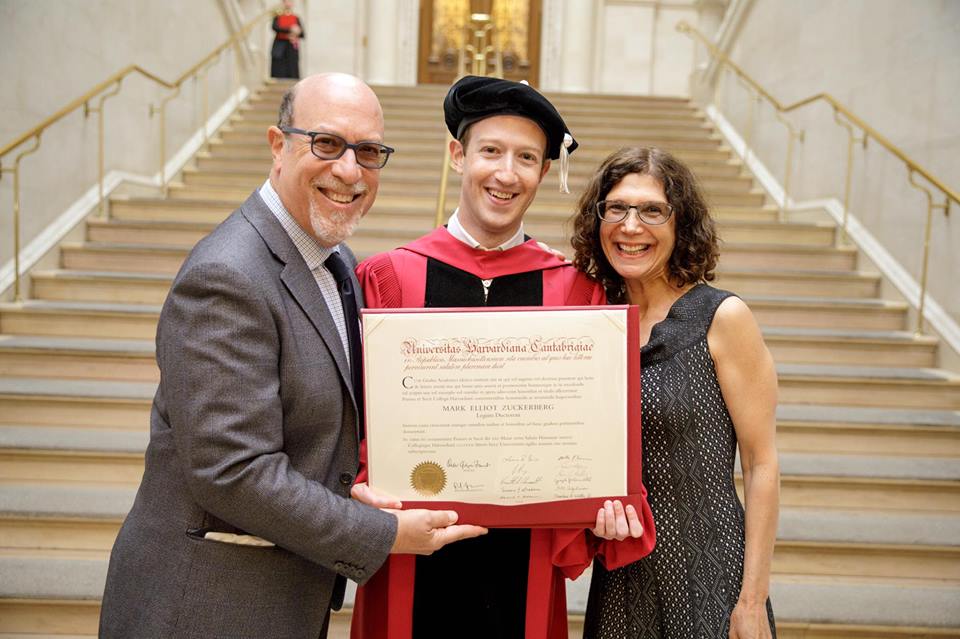
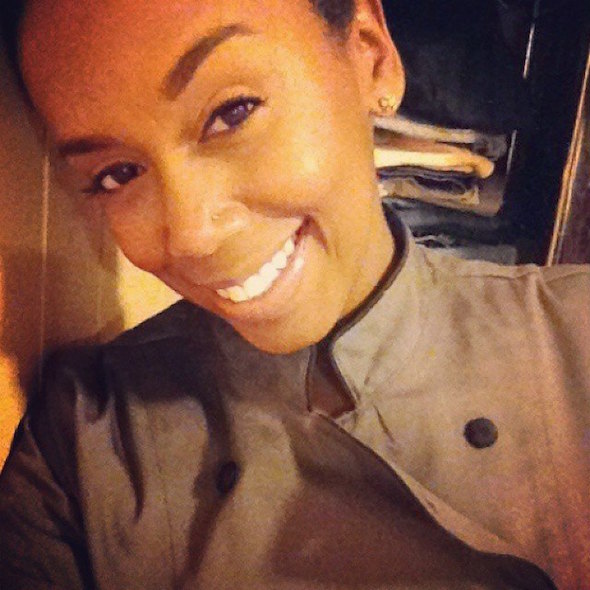
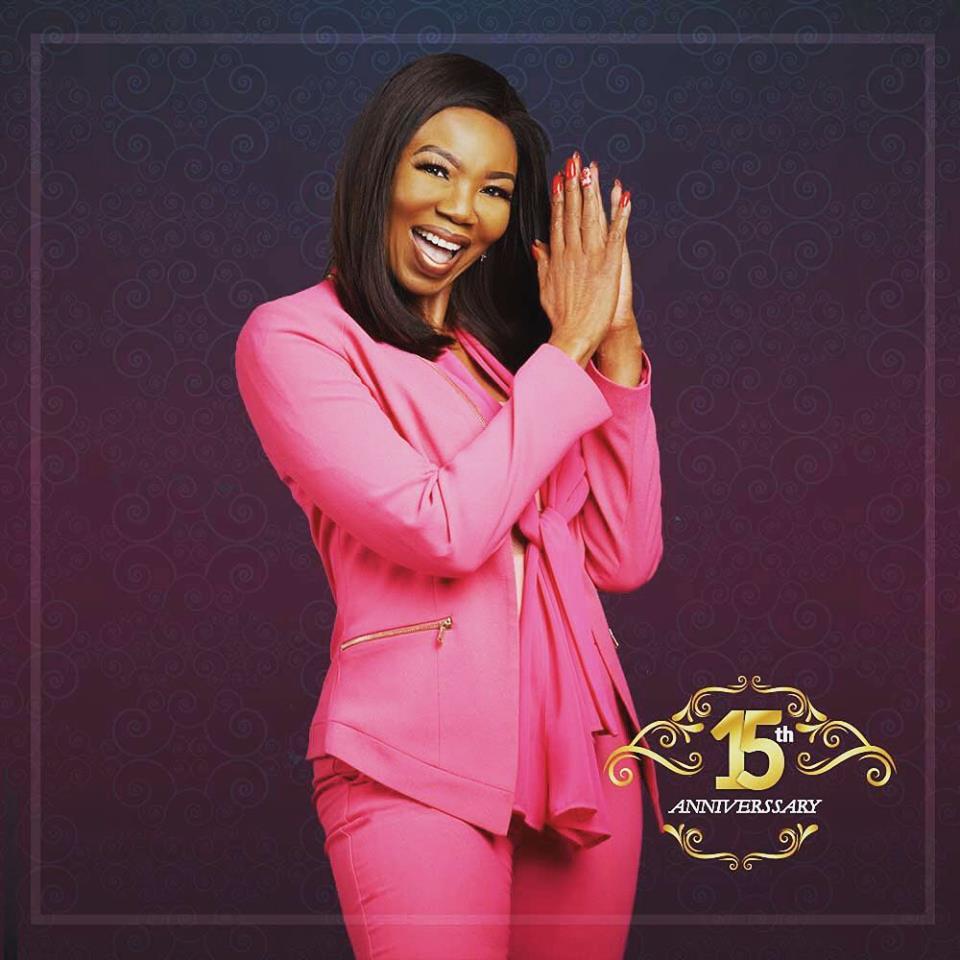
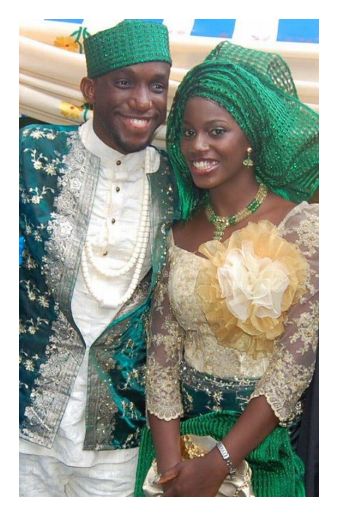
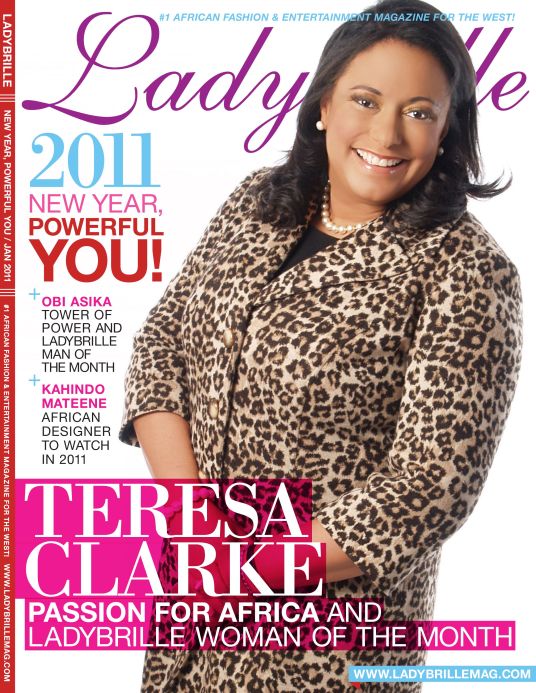
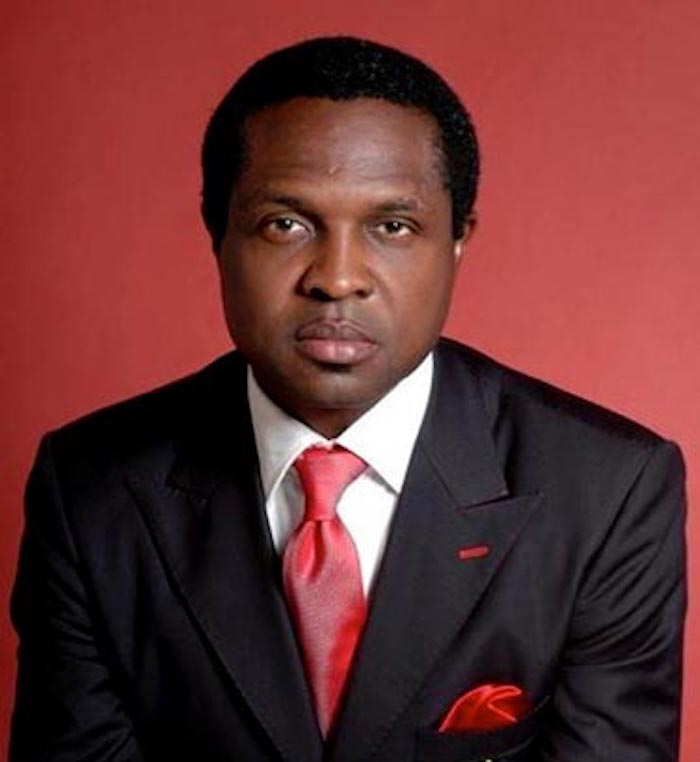
I absolutely agree with you on a lot of this except….Why is there this need to ‘define African fashion’? Already, we have marginalized ourselves as a whole and limited ourselves as far as the fashion world goes simply by labeling ourselves. The best move would be for every designer to find an individual identity, something that would both stand out and be as acceptable as every other label from every other corner of the world. Think about it, the need to define African fashion is what has led to a massive and almost disgusting dependability by Kenyan designers on the African print fabric. So now hardly any of these local labels have a unique identity. It’s just one dress after another with a variation of vitenge. A fashion house get’s stuck on the same concept for years on end, simply adding a ruffle here, a high collar there. Complacency. The media fixes a monopoly by giving attention to the same old designers with the same old looks. Complacency. How is the scene ever to advance? Want an identity of your own? EMBRACE TEXTILE DESIGN. Study various concepts: minimalism, modernism, globalism, periodic(20s, 40s, 60s, Renaissance, Marie Antoinette, Victorian). I mean, really design. Go outside your box..Way outside it…Go to Narnia. Look around…Kitenge is dead. Bury it and move on. The rest of the world has.
I have discussed “African Fashion” and the challenge of defining what it is (https://ladybrille.com/2011/07/will-the-real-african-designers-please-stand-up-re-evaluating-the-definition-of-african-fashion-african-designers.html). Personally, however, I have never heard an American designer vigorously object to being labeled as an “American” designer nor object to the impact of “American” fashion on the world. We know what we mean, from an historical context, when we speak of Western fashions whether they are generated from The USA, Paris, Italy or the UK. So, I don’t have an issue with “African” fashion, per se. It encompasses a vast continent and the designs emanate/come from indigenes of Africa. That designers choose to and the world interprets the mud cloth, ankara et. al., to be “African” fashion, does not mean that we discard the term.
I also do not believe defining “African” fashion has led to the issues you discuss. I think the lack of fashion business education, skills and expertise and the human nature of jumping on the bandwagon of trends are all factors that result in duplication of fashions that do not stand the test of time.
If our designers and the producers that showcase them focus on two key business principles:
1. make enough money to keep making more fashion/producing great shows; and
2. Focus on making designs/producing shows that impacts the culture (such as Omoyemi Akerele’s MTN Lagos Fashion and Design Week which necessarily changes mindsets to view fashion as a viable business not justentertainment),
then they will be successful and stand the test of time.
Obviously to get there means they have to have a business strategy and understand the business of fashion.
-Uduak
Hmm, I am not sure I agree fully with this article.There are already a lot of African Designers who create very fashion forward and distinct collections and don’t use African prints / fabrics – like for example, Mataano, Maki-Oh, Tsemaye Bintie Fati Asibelua and many more. Also some of them are creating new interpretations of Ankara prints or are re-creating them digitally. I am continuously vowed and proud to see what creativity the continent has to offer.
let us join fashion together in Africa so that it can be one. fashion is are big business one person can not do it alone. African have to create it own world of African fashion. time us come we have to unit and work hard join me in buyme made in Africa this group is for only African designers were we can shear ideas togethers of fashion in Africa the dream of this group is how we can sell and give African good services.u can post all your designers u have in my wall. if u have are idea